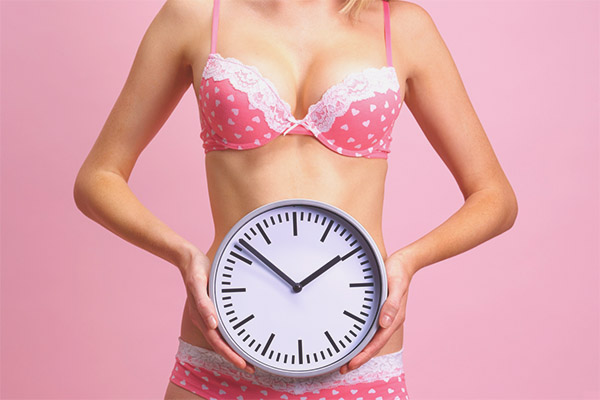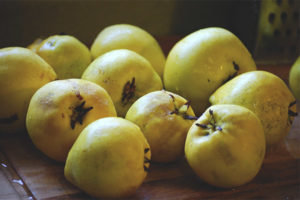The content of the article
- 1 Possible reasons
- 2 Is it dangerous?
- 3 How to recover and restore a broken menstrual cycle
- 4 What to do if a girl has a problem in her teens
- 5 What should a girl do if a problem appears in childbearing age
- 6 How to treat bleeding with menopause
- 7 Folk remedies
- 8 Surgery
- 9 Preventive measures
- 10 Video: 9 causes of menstrual failure
With such a problem as a violation of the menstrual cycle, faced by a lot of women. Moreover, this phenomenon does not depend on age, it can be observed both in young girls, in whom menstruation has just begun, and in mature women due to hormonal failure, trauma, the occurrence of the disease.
Usually the first periods in the life of a girl come in about 12-14 years. During the first year, the menstrual cycle is only established. On average, in 12 months a girl has at least eight cycles. If a girl over the age of 14 does not start her period, she should visit the doctor for an examination.
The normal duration of the menstrual cycle is 21-33 days.It is necessary to begin counting from the first day of the next monthly before the beginning of the next. A regular cycle is an indicator of a woman’s health. Bleeding should last no more than a week, and the volume of blood lost should be no more than 100 milliliters. Menstruation that does not meet this standard is a violation.
Regardless of the nature of the menstrual disorder, this can trigger problems with the functioning of the reproductive or endocrine system. For this reason, any failure in the cycle should be a reason for prompt access to a gynecologist and the necessary examinations.
This phenomenon should be taken very seriously, because if you do not receive treatment in a timely manner, in the future you may be faced with the impossibility of becoming pregnant and giving birth to a healthy child.
Possible reasons
In most cases, menstrual disorders are due to changes in hormonal levels. And it’s not a fact that the reason lies precisely in the ovaries: a disruptive factor in the functioning of the thyroid or adrenal glands can be a triggering factor.
According to WHO statistics, the most common causes of menstrual disorders are:
- Inflammation or other damage to the hypothalamic-pituitary region.
- Ovarian failure.
- Abnormalities of the uterus.
- Oncology.
- Increased levels of prolactin in the blood.
In addition, the inflammation that has afflicted the pelvic organs can cause the menstrual cycle to fail. When the provoking factor is eliminated, the cycle is normalized. The same applies to sexually transmitted diseases.
Such common diseases such as rubella or chickenpox, detrimental effect on the formation of follicles in the ovaries. The result of this can make itself felt after several months, and sometimes years after recovery.
Disruption of the menstrual cycle sometimes indicates the presence of severe pathologies:
- endometriosis;
- adenomyosis;
- polyps;
- uterine fibroids;
- oncology of the pelvic organs.
In addition, the usual cycle of menstruation can be shot down due to adverse conditions, which include:
- adherence to strict diets;
- climate change;
- physical overstrain;
- psycho-emotional stress;
- excessive passion for alcoholic beverages;
- sexual abstinence over time;
- the use of certain drugs.
It should be remembered that the problems with the stability of the menstrual cycle can be caused by a hereditary factor.
Is it dangerous?
In any case, such a problem as a failure of the menstrual cycle should not be left without proper attention, since this phenomenon can lead to extremely adverse consequences:
- inability to get pregnant and bear a child;
- the occurrence of iron deficiency anemia;
- changes in hormone levels, which in turn may trigger the development of other pathologies;
- formation in the uterus of benign and malignant tumors.
How to recover and restore a broken menstrual cycle
Treatment should be appointed by a competent specialist.Therapeutic measures will depend on the identified cause of the cycle failure. For accurate diagnosis, the following measures will be taken:
- A survey of a woman in which it turns out what kind of lifestyle she leads, what diseases she has suffered, etc.
- Examination by a gynecologist, which also includes an analysis of STDs and a smear for flora.
- Ultrasound examination of the pelvic organs and thyroid.
- HSG (hysterosalpingography) is a method of x-ray diagnostics of diseases of the uterus and fallopian tubes, which is based on the introduction of contrast agents into them.
- Hormonal screening, which determines the level of sex hormones in the patient's body.
- Radiography of the head (including the Turkish saddle), this procedure will help to identify the hypothalamic-pituitary disorders.
Based on the results obtained during the examinations, the doctor will prescribe the appropriate treatment, which may consist of the following:
- lifestyle correction;
- drug therapy using hormones;
- physiotherapy;
- phytotherapy;
- taking medications - uterotonics, which reduce blood loss;
- curettage of the uterus;
- operation.
If in time to seek medical help, the chances that the menstrual cycle is fully restored, and, consequently, the disease will recede, will be quite high.
It should be noted that even with a broken menstrual cycle, a woman can conceive and carry out a child. Medication using drugs that stimulate ovulation will help to get pregnant.
What to do if a girl has a problem in her teens
When a teenage girl has a cycle failure, accompanied by juvenile bleeding, a dysfunctional discharge from the uterus, the treatment is carried out in two stages.
First, hormonal drugs are used, as well as hemostatic drugs - Ditsinon, Vikasol.
If the bleeding is still quite strong and long, while the girl is worried about symptoms such as obvious dizziness, passivity and lethargy, a decrease in hemoglobin level, a curettage procedure can be prescribed. Then a histology scraping is performed.
A doctor can prescribe hormonal medications (Novinet, Mersilon), but only if the hemoglobin level is at least 80 g / l.
If necessary, they will be treated against iron deficiency anemia (blood transfusion, red blood cells, reopolyglucine). Iron supplements are discharged.
In adolescence, the duration of hormonal drugs should not exceed three months. Anemia therapy is performed until the hemoglobin values are normalized.
With a mild degree of impairment, therapy with the use of vitamins per phase cycle is applied. Funds in this case are taking a doctor-prescribed scheme to stimulate the production of hormones in the ovaries. Such treatment involves taking in the first phase of the menstrual cycle vitamins of group B, in the second - vitamins A, C, E, folic acid.
What should a girl do if a problem appears in childbearing age
In this situation, the treatment regimen will be similar to the treatment of menstrual disorders in a teenager. Regardless of age, with severe bleeding, the curettage procedure is performed. This is done both for the purpose of diagnosis and treatment.
Then therapy is carried out using hormonal agents. A woman will have to take combined oral contraceptive drugs according to the standard scheme.Directly at the defective second phase of the cycle, the doctor may prescribe drugs containing progesterone - Duphaston or Utrogestan.
Since cycle disorders can cause the impossibility of conception, women in reproductive age are sometimes prescribed Pergonal or Choriogonin - drugs that are aimed at stimulating the formation of active follicles. Clomiphene is prescribed to stimulate ovulation.
How to treat bleeding with menopause
If severe bleeding is observed during menopause, the uterus is necessarily scraped out by the woman, since this phenomenon can signal dangerous diseases, including the onset of atypical hyperplasia, as well as the development of a cancerous tumor.
In severe cases, the doctor may decide to perform a hysterectomy - a gynecological operation, during which the uterus is removed. The procedure is usually carried out in case of a malignant tumor of the uterus, as well as the cervix or ovary.
Folk remedies
For disorders of the menstrual cycle, treatment is possible with the help of traditional medicine.However, before using them, you should consult a doctor.
The choice of remedy will depend on the type of disorder:
- For rare menstruation (oligomenorrhea) a remedy is used, which is prepared as follows: ½ tsp. chop parsley seeds to a powdered state. Drink three times a day with half a cup of clean water, in which a little honey is added.
- In the absence of menstruation for a long time, for example, for several menstrual cycles (amenorrhea), an agent based on wormwood is used, which must be thoroughly crushed. The resulting raw material pour one cup of boiling water, and then just put in a water bath. After 20 minutes, remove from heat, cool and strain. Ready to drink broth 100 ml three times a day before meals.
- If the months are long (more than 7 days) and abundant (over 100 ml), you can use the following recipe: take the following medicinal plants in the same amount: raspberry leaves, oak bark, calendula gooseberry, strawberry leaves, yarrow. Next you need a tablespoon of the resulting collection pour a glass of cold boiled water.It remains to insist the drug for four hours. Then put on the stove, bring to a boil, after 5-7 minutes, remove from heat, let cool and strain. Prepared to drink during the day. The duration of the course of therapy is at least five days.
- Also, a means prepared on the basis of horsetail will help to normalize a long cycle and reduce blood loss. This plant has long been used for medical purposes, thanks to its hemostatic properties. A spoonful of raw materials should be poured 500 ml of boiling water, insist and continue to drink only a tablespoon at intervals of two hours until the bleeding stops. Then for therapeutic purposes, a spoon three times a day.
- When excessively painful menstruation helps herbal collection, consisting of birch leaves, valerian root, mint, buckthorn bark, blackberry leaves, yarrow. So, pour a tablespoon of the composition with 250 ml of boiling water for at least 20-30 minutes. insist, filter well, drink a little throughout the day.
Surgery
For surgery in the treatment of menstrual disorders resort extremely rarely and only in such cases:
- when there is severe bleeding, which cannot be stopped by other means;
- if the patient is over 35 years old.
- In this situation, the procedure is carried out curettage of the uterus.
Preventive measures
- To visit a gynecologist for a routine examination at least once every six months.
- Carefully follow the rules of personal hygiene.
- To follow the daily routine (to rest in time, not to allow increased loads, to eat a balanced diet).
- Maintain the menstrual calendar - this will allow to detect failure in a timely manner.
- Lead a mobile lifestyle (exercise, more walking in the fresh air).
- In time to heal the emerged diseases of other systems and internal organs.
Video: 9 causes of menstrual failure











To send